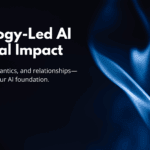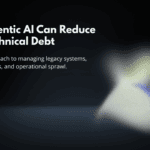The landscape of artificial intelligence is evolving rapidly. In 2025, we are seeing a significant transition—from AI being used as a supportive tool to becoming a semi-autonomous decision-making agent. Technologies like GPT Agents, Claude 4, and AgentOps are pushing the boundaries of what AI can do independently. This shift requires not just a technological upgrade, but a fundamental rethinking of how organizations are structured and managed. The critical question is: Is your company structurally prepared to work with agents that not only assist but also make decisions?
The Shift from Assistive AI to Decision-Making Agents
Until recently, AI in most enterprises functioned like a smart tool. It required explicit instructions, human inputs, and clearly defined boundaries. Whether it was generating reports, summarizing content, or optimizing schedules, the AI was reactive and task-bound. But this is no longer the case.
The new generation of AI agents is proactive. They can initiate tasks based on goals, plan sequences of actions, and execute them autonomously. They’re not waiting for instructions—they are making decisions and taking action. This fundamental change challenges the traditional “command and control” approach that most organizations use with technology.
Being structurally ready for such agents means moving beyond thinking of AI as a tool. It means preparing for systems that can operate independently, and aligning organizational processes to support, monitor, and collaborate with these agents.
Traditional Org Charts vs. Agent-Ready Structures
Most companies are built around vertical structures, with decision-making concentrated at the top and responsibilities flowing downward. However, AI agents function horizontally. They often operate across departments—integrating sales data with customer service inputs or aligning HR information with operational workflows.
This cross-functional capability requires changes in how organizations are designed. You may need new roles and workflows that support:
- Agent operations (AgentOps) to monitor and manage the lifecycle of AI agents
- Governance workflows that define boundaries, permissions, and fail-safes
- Collaboration protocols that enable humans and agents to work side-by-side efficiently
Without these, agents might either operate in silos or pose risks by acting in uncoordinated ways.
Do You Have the Right Feedback Loops?
One of the key strengths of decision-making agents is their ability to learn from feedback. But that feedback must come from the systems they interact with. If your enterprise software—CRM, ERP, or service management platforms—cannot provide clear reinforcement signals or detect policy violations, agents cannot improve or self-correct.
For example, if an agent is handling customer complaints but does not receive any input on whether its responses led to resolution or escalation, it has no way to adjust its behavior. Therefore, structural readiness includes embedding real-time, observable, and correctable feedback mechanisms into your enterprise workflows. This allows agents to stay aligned with company goals and avoid undesired outcomes.
New Roles Emerging: Who Owns the Agent’s Output?
As agents take on more responsibility, new human roles are emerging to manage, supervise, and validate their work. Just like a human employee needs a manager, an AI agent needs a point of accountability.
Organizations will need to introduce roles such as:
- Agent Supervisors: to monitor ongoing actions, set boundaries, and intervene when needed
- AI Workflow Managers: to design and manage end-to-end workflows that include both humans and agents
- Decision Interpreters: to explain outcomes to stakeholders and clients in understandable terms
These are not traditional IT roles. They require a mix of technical understanding, business acumen, and ethical reasoning. A structural redesign must take talent development and role clarity into account to support agent deployment effectively.
Governance Isn’t Just Policy—It’s Embedded Infrastructure
Having an AI policy document is not the same as having real governance. True governance means the ability to monitor, trace, explain, and escalate AI decisions in real time.
Key infrastructural capabilities include:
- Monitoring dashboards that provide visibility into what agents are doing
- Audit trails that log every action, decision, and trigger
- Escalation mechanisms that automatically alert human supervisors when thresholds are crossed
Without these systems in place, AI decision-making can become opaque, increasing the risk of compliance issues and reputational damage.
Organizational Memory vs. Agent Memory
Many advanced agents now support long-term memory. They can recall previous conversations, actions, and preferences. But are they aligned with your company’s institutional knowledge?
Structural readiness involves creating a centralized, well-governed knowledge base that agents can access and align with. This includes internal documentation, standard operating procedures, decision logs, and domain-specific intelligence. Synchronizing agent memory with organizational memory helps maintain consistency, compliance, and context-awareness in decision-making.
Are Your APIs, Tools, and Protocols Agent-Friendly?
Agents need structured environments to function efficiently. That means clear APIs, compliant tool wrappers, and reliable integration protocols.
If your enterprise systems are fragmented or manually operated, agents cannot operate seamlessly. You need to assess whether your tools allow agents to read, write, and act without unnecessary human intervention. Building an agent-ready environment also includes establishing orchestration protocols to manage interactions between multiple agents and software systems.
Agent Readiness is Not Just Tech—It’s Culture
Perhaps the most overlooked aspect of structural readiness is culture. Are managers prepared to delegate decisions to a non-human agent? Are teams trained to interpret and collaborate with outputs from AI agents?
Resistance to AI often stems not from technical limitations but from psychological and organizational inertia. Building readiness includes:
- Running training programs to help staff understand how agents work
- Clarifying accountability in joint human-agent processes
- Encouraging a mindset of experimentation, adaptability, and shared responsibility
Change management is as important as system design in building an agent-ready organization.
Conclusion: A Readiness Checklist
To summarize, agent readiness is a multi-dimensional effort. Ask yourself:
- Are agent decisions traceable and explainable?
- Do you have defined processes for escalation when agents go off-course?
- Is governance embedded into the systems—not just documented on paper?
- Are humans being upskilled to supervise and collaborate with agents?
- Is your tech stack structured to support autonomous orchestration?
If the answer to any of these is no, your company might not be structurally ready for decision-making agents. But recognizing this gap is the first step toward preparing for a future where agents aren’t just tools—but trusted contributors to business success.



